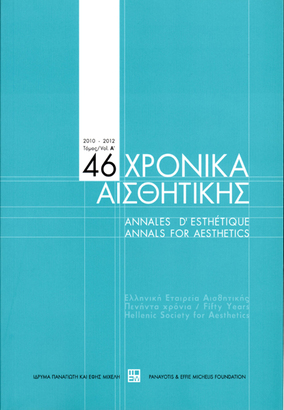Η γνησιότητα στην τέχνη
Part of : Χρονικά αισθητικής : ετήσιον δελτίον της Ελληνικής Εταιρείας Αισθητικής ; Vol.23-24, No.1, 1984, pages 23-27
Issue:
Pages:
23-27
Parallel Title:
Genuiness in art
Author:
Abstract:
Genuineness in art is revealed in the form of the object created. Diversification of art into various schools is not directed against genuineness but simply indicates the unlimited possibilities of imagination when perceived in objects of art.Genuineness is a criterion of artistic creation and of aesthetic enjoyment and has been employed: 1) as freedom of realisation of the content of imagination; 2) as search for the material and the most suitable means for making the content perceptible as a form.Using negatively the criterion of genuineness one may: 1) distinguish artistic creation from mimicry as mechanical repetitiveness (therefore, genuine art cannot be identified with fashion, it does not exclude it but does not take it for granted); 2) differentiate artistic emotion from emotions of other quality such as fear, sorrow, sympathy, aversion; 3) separate art from nomenclature and the simulated adherence to one school or another. For instance, one may call himself a surrealist in order to justify his art.A positive application of the criterion of genuineness does not require simply a mere response of a form to a content. It goes deeper into the roots of psychical life and discovers structures suitable for expression.Thus form does not simply acquire depth but expresses it with the possibilities of analogy and the generalization of the multiple under the unique. Genuine art works with symbols that stimulate imagination to further extensions, which however cannot be substituted for.
Subject:
Notes:
Αποτελεί ανακοίνωση που έγινε αγγλιστί στο Διεθνές Συνέδριο Αισθητικής στην Κρακοβία τον Αύγουστο του 1985




